
Deutsch-Chinesische Enzyklopädie, 德汉百科
 Finland
Finland

 Finland
Finland

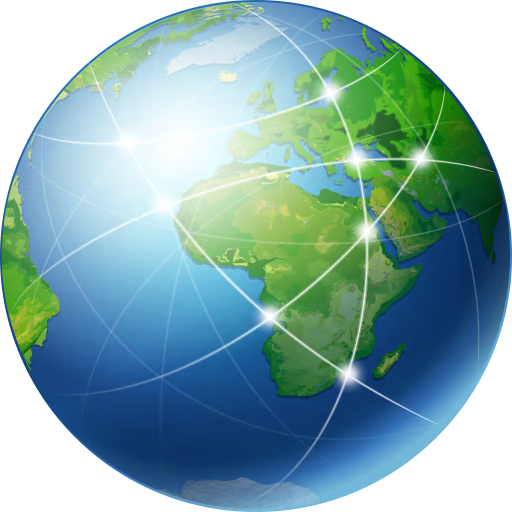 Geography
Geography

 Geography
Geography
 ***IMF Developed countries
***IMF Developed countries
 IMF Developed countries
IMF Developed countries
 IMF Developed countries
IMF Developed countries
 TOP5
TOP5

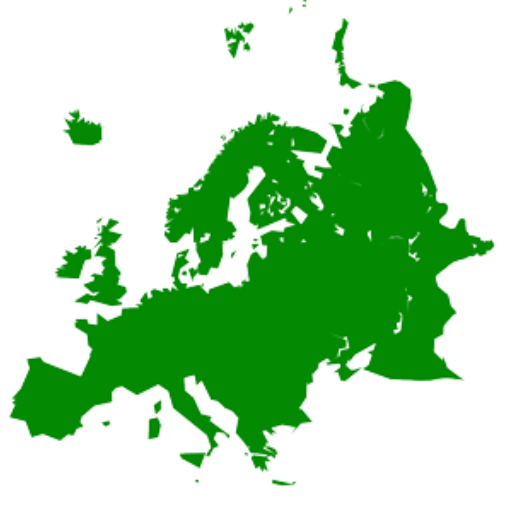 States of Europe
States of Europe

芬兰共和国(芬兰语:Suomen tasavalta,瑞典语:Republiken Finland),通称“芬兰”(芬兰语:Suomi,瑞典语:Finland,![]() 双语发音 帮助·信息),是北欧国家,也是个双语国家,瑞典语和芬兰语平等成为芬兰官方语言。陆地上与瑞典、挪威和俄罗斯接壤,西南面被波罗的海环绕,东南部为芬兰湾,西面则为波的尼亚湾。芬兰是世界高度的发达国家和福利国家,国民享有极高标准的生活品质。联合国公布的《世界幸福感报告》中芬兰在2018至2020年连续三年排为世界上最幸福的国家[8][9][10]。
双语发音 帮助·信息),是北欧国家,也是个双语国家,瑞典语和芬兰语平等成为芬兰官方语言。陆地上与瑞典、挪威和俄罗斯接壤,西南面被波罗的海环绕,东南部为芬兰湾,西面则为波的尼亚湾。芬兰是世界高度的发达国家和福利国家,国民享有极高标准的生活品质。联合国公布的《世界幸福感报告》中芬兰在2018至2020年连续三年排为世界上最幸福的国家[8][9][10]。
Finnland (finnisch [ˈsuɔmi], schwedisch Finland [ˈfɪnland]), amtlich Republik Finnland (finnisch Suomen tasavalta, schwedisch Republiken Finland) ist eine parlamentarische Republik in Nordeuropa und seit 1995 Mitglied der Europäischen Union. Finnland grenzt an Schweden, Norwegen, Russland und die Ostsee.
Mit etwa 5,5 Millionen Einwohnern auf einer Fläche fast so groß wie Deutschland gehört Finnland zu den am dünnsten besiedelten Ländern Europas. Der Großteil der Bevölkerung lebt im Süden des Landes mit der Hauptstadt Helsinki sowie den Großstädten Espoo, Tampere, Vantaa und Turku. Die beiden Amtssprachen sind Finnisch und Schwedisch, wobei 88,7 % der Bevölkerung finnisch- und 5,3 % schwedischsprachig sind. Die schwedischsprachige Inselgruppe Åland hat einen weitreichenden Autonomiestatus.
Seit dem Ende der letzten Kaltzeit ist in Finnland Besiedlung nachweisbar. Ab der Völkerwanderungszeit kam Finnland über den sich ausweitenden Ostseehandel stärker in Kontakt mit dem übrigen Europa; im Hochmittelalter wurde es christianisiert. Über Jahrhunderte hinweg war Finnland integraler Teil Schwedens, bevor es im 18. Jahrhundert zunehmend in den Einflussbereich des expandierenden Russischen Kaiserreiches geriet und ihm 1809 als Großfürstentum Finnland eingegliedert wurde. Mit der Einführung des Frauenwahlrechts 1906 war Finnland das erste Land in Europa, in dem das aktive Frauenwahlrecht auf nationaler Ebene eingeführt wurde, und weltweit war es nach Neuseeland und Australien der dritte Staat. Beim passiven Wahlrecht ist Finnlands Spitzenstellung noch deutlicher: Erstmals weltweit wurden Frauen in ein Parlament gewählt.
Erst der Sturz des russischen Kaisers und die anschließende Oktoberrevolution 1917 ermöglichten Finnland die Loslösung von Russland. Am 6. Dezember 1917 wurde vom finnischen Parlament die Unabhängigkeit erklärt.
フィンランド共和国(フィンランドきょうわこく、フィンランド語: Suomen tasavalta、スウェーデン語: Republiken Finland)、通称フィンランドは、北ヨーロッパに位置する共和制国家。北欧諸国のひとつであり、西はスウェーデン、北はノルウェー、東はロシアと隣接し、南はフィンランド湾を挟んでエストニアが位置している。
首都ヘルシンキは露仏同盟以来、ロシアの主要都市であるサンクトペテルブルク方面へ西側諸国が投資や往来をするための前線基地となってきた。同じく直近の旧領ヴィボルグはサイマー運河の出口であったが、現在はロシア領で、ノルド・ストリームの経由地となっている。ロシアと欧州諸国の間にある地政学的な重要性から、たびたび勢力争いの舞台や戦場になってきた。
中立的外交の裏では、外交・安全保障やエネルギー政策を巡り東西の綱引きが行われている。国内には原子力発電所があり、オンカロ処分場が2020年に開設されれば世界初の使用済み核燃料の最終処分場となる。情報産業も政治と関係しており、公職経歴者が民間企業の幹部になる例として、エスコ・アホという首相経験者がノキア取締役を務めているようなことがある。
人口や経済規模は小さいが、一人当たりGDPなどを見ると豊かで自由な民主主義国として知られている。フィンランドは2014年のOECDレビューにおいて「世界でもっとも競争的であり、かつ市民は人生に満足している国のひとつである」と報告された[1]。フィンランドは収入、雇用と所得、住居、ワークライフバランス、保健状態、教育と技能、社会的結びつき、市民契約、環境の質、個人の安全、主観的幸福の各評価において、すべての点でOECD加盟国平均を上回っている[1]。
Finland (Finnish: Suomi [ˈsuo̯mi] (![]() listen); Swedish: Finland [ˈfɪ̌nland] (
listen); Swedish: Finland [ˈfɪ̌nland] (![]() listen), Finland Swedish: [ˈfinlɑnd]), officially the Republic of Finland (Finnish: Suomen tasavalta, Swedish: Republiken Finland (
listen), Finland Swedish: [ˈfinlɑnd]), officially the Republic of Finland (Finnish: Suomen tasavalta, Swedish: Republiken Finland (![]() listen to all)),[note 1] is a Nordic country in Northern Europe bordering the Baltic Sea, Gulf of Bothnia, and Gulf of Finland, between Sweden to the west, Russia to the east, Estonia to the south, and north-eastern Norway to the north. The capital and largest city is Helsinki. Other major cities are Espoo, Tampere, Vantaa, Oulu, Turku, Jyväskylä, Lahti and Kuopio.
listen to all)),[note 1] is a Nordic country in Northern Europe bordering the Baltic Sea, Gulf of Bothnia, and Gulf of Finland, between Sweden to the west, Russia to the east, Estonia to the south, and north-eastern Norway to the north. The capital and largest city is Helsinki. Other major cities are Espoo, Tampere, Vantaa, Oulu, Turku, Jyväskylä, Lahti and Kuopio.
Finland's population is 5.53 million as of March 2020,[7] the majority of whom live in the central and south of the country and speak Finnish, a Finnic language from the Uralic language family, unrelated to the Scandinavian languages.[8] Finland is the eighth-largest country in Europe and the most sparsely populated country in the European Union. It is a parliamentary republic of 310 municipalities,[9] and includes an autonomous region, the Åland Islands. Over 1.4 million people live in the Greater Helsinki metropolitan area, which produces one third of the country's GDP. Swedish is the second official language of Finland, which is mainly spoken in certain coastal areas and on Åland. A large majority of Finns are members of the Evangelical Lutheran Church.[10]
Finland was inhabited when the last ice age ended, approximately 9000 BC.[11] Comb Ceramic culture introduced pottery 5200 BC and Corded Ware culture coincided with the start of agriculture between 3000 and 2500 BC. The Bronze Age and Iron Age were characterised by extensive contacts with other cultures in the Fennoscandian and Baltic regions. At the time Finland had three main cultural areas – Southwest Finland, Tavastia and Karelia.[12] From the late 13th century, Finland gradually became an integral part of Sweden through the Northern Crusades and the Swedish part-colonisation of coastal Finland, a legacy reflected in the prevalence of the Swedish language and its official status.
In 1809, Finland was incorporated into the Russian Empire as the autonomous Grand Duchy of Finland. In 1906, Finland became the first European state to grant all adult citizens the right to vote, and the first in the world to give all adult citizens the right to run for public office.[13][14] Following the 1917 Russian Revolution, Finland declared itself independent. In 1918, the fledgling state was divided by civil war, with the Bolshevik-leaning Red Guard, supported by Soviet Russia, fighting the White Guard, supported by the German Empire. After a brief attempt to establish a kingdom, the country became a republic. During World War II, Finland fought the Soviet Union in the Winter War and the Continuation War and lost some land, but maintained independence.
Finland remained largely an agrarian country until the 1950s. After World War II, the war reparations demanded by the Soviet Union forced Finland to industrialise. The country rapidly developed an advanced economy while building an extensive welfare state based on the Nordic model, resulting in widespread prosperity and a high per capita income.[15] Finland is a top performer in numerous metrics of national performance, including education, economic competitiveness, civil liberties, quality of life, and human development.[16][17][18][19] In 2015, Finland was ranked first in the World Human Capital[20] and the Press Freedom Index and as the most stable country in the world during 2011–2016 in the Fragile States Index,[21] and second in the Global Gender Gap Report.[22] It also ranked first on the World Happiness Report report for 2018 and 2019.[23]
Finland joined the United Nations in 1955 and adopted an official policy of neutrality. The Finno-Soviet Treaty of 1948 gave the Soviet Union some leverage in Finnish domestic politics during the Cold War. Finland joined the OECD in 1969, the NATO Partnership for Peace in 1994,[24] the European Union in 1995, the Euro-Atlantic Partnership Council in 1997,[24] and the Eurozone at its inception in 1999.
La Finlande (en finnois : Suomi Prononciation ; en suédois : Finland), en forme longue la république de Finlande (en finnois : Suomen tasavalta ; en suédois : Republiken Finland), est un pays d'Europe du Nord, membre de l'Union européenne depuis 1995.
La Finlande est baignée par la mer Baltique, plus précisément par le golfe de Finlande au sud et par le golfe de Botnie à l'ouest et au sud-ouest. Son territoire s'étend de part et d'autre du cercle arctique dans la partie orientale de la Fennoscandie, ce qui fait d'elle un pays nordique entièrement extérieur à la Scandinavie. Composé de plus de 3 000 lacs et d'innombrables îles, parmi lesquelles celles de l'archipel autonome d'Åland, il occupe une superficie totale de 338 145 km2 entre la Norvège au nord, la Russie à l'est et la Suède au nord-nord-ouest, ce qui en fait un des plus vastes pays de l'Union européenne.
Cet espace géographique soumis à un climat rigoureux pendant l'hiver est majoritairement une zone de taïga. Les 5,3 millions d'habitants que recense la démographie nationale confèrent au pays l'une des plus faibles densités de population de toute l'Union européenne. Principalement installés dans le Sud du pays, en particulier sur la côte méridionale, où se trouve la capitale, Helsinki, mais aussi les autres municipalités les plus peuplées, à savoir Espoo et Vantaa, qui sont regroupées au sein de la Région capitale ou Grand Helsinki, les Finlandais disposent de deux langues officielles, le finnois et le suédois.
Enrichie par les apports ancestraux d'une mythologie féconde, par les Samis, ou encore par les populations autochtones de la province septentrionale de Laponie, et bien qu'elle se soit clairement occidentalisée dans la seconde moitié du XXe siècle à la suite d'une reconversion réussie de son économie (centrée sur la sylviculture, puis la métallurgie, et enfin l'électronique), la culture nationale plébiscite toujours un certain dépouillement matériel, dont le sisu et le sauna sont des symboles sûrs, ainsi qu'une culture du silence.
Longtemps sous domination du voisin suédois, sous le règne duquel fut fondée la première capitale, Turku, la Finlande demeure marquée par les nombreux conflits qui l'ont opposée durant toute son histoire récente à la Russie, puissance impérialiste dont elle est devenue un grand-duché autonome en 1809, et dont elle n'a obtenu son indépendance qu'en 1917. L'année suivante, une guerre civile ensanglante le pays, suivie de deux guerres contre l'URSS pendant la Seconde Guerre mondiale, et enfin, d'une longue tutelle soviétique indirecte durant la guerre froide, connue sous le nom de « finlandisation ».
Ces soubresauts n'ont cependant pas empêché l'établissement d'une république stable dont les réalisations sont souvent présentées en modèles, et ce en de nombreux domaines, notamment environnement et qualité de vie. La politique nationale s'articule autour d'un président de la République, Sauli Niinistö, d'un parlement unicaméral, l'Eduskunta et d'un gouvernement dirigé par la Première ministre, actuellement Sanna Marin. Le Grand-duché de Finlande, alors composante de l'Empire russe, a été le premier État en Europe à accorder le droit de vote aux femmes ainsi que le premier au monde à les rendre éligibles au même titre que les hommes. En 2009, l'étude Legatum Prosperity classe la Finlande en première position à la suite de ses performances économiques et de la qualité de vie4.
La Finlande connaît une forte période de récession à la fin des années 2000, en partie liée à l’affaiblissement de son industrie électronique (comme la chute de Nokia), la récession de son voisin russe et une crise dans l'industrie forestière. L'économie du pays se redresse néanmoins au milieu des années 2010.
La Finlandia (in finlandese: , in svedese: ), ufficialmente Repubblica di Finlandia (in finlandese: Suomen tasavalta e in svedese: Republiken Finland)[7], è un paese dell'Europa del nord, facente parte della regione nota come Fennoscandia e della penisola scandinava. Confina con la Svezia a ovest, la Norvegia a nord e la Russia ad est. Si affaccia a sud sul golfo di Finlandia, sulla cui sponda meridionale si trova l'Estonia. È uno Stato facente parte dell'Unione europea.
In Finlandia vivono 5,5 milioni di persone, per la maggior parte concentrate nelle regioni meridionali. In termini di superficie, è l'ottavo stato più grande d'Europa e lo stato con più bassa densità di popolazione nell'Unione europea. Politicamente, è una repubblica parlamentare con un governo centrale con sede nella capitale Helsinki, i governi locali in 336 comuni e una regione autonoma, le isole Åland. Circa un milione di abitanti vive nella zona della conurbazione di Helsinki (composta da Helsinki, Espoo, Kauniainen e Vantaa) e un terzo del prodotto interno lordo del paese è prodotto lì. Altre grandi città sono Tampere, Turku, Oulu, Jyväskylä, Lahti e Kuopio.
La Finlandia fece parte del Regno di Svezia dal XII secolo al 1809, quando divenne un granducato autonomo all'interno dell'Impero Russo fino alla rivoluzione del 1917. Il 6 dicembre di quell'anno la Finlandia ottenne l'indipendenza, seguita da una guerra civile terminata con la sconfitta dei "Rossi" filo-bolscevichi da parte dei filo-conservatori "Bianchi" sostenuti dall'Impero tedesco. Dopo un breve tentativo di stabilire una monarchia nello stato, la Finlandia divenne una repubblica.
L'esperienza finlandese della Seconda guerra mondiale ha coinvolto tre conflitti separati: la Guerra d'inverno (1939-1940) e la Guerra di continuazione (1941-1944) contro l'Unione Sovietica, e la Guerra di Lapponia (1944-1945) contro la Germania nazista. Dopo la fine della guerra, la Finlandia ha aderito all'Organizzazione delle Nazioni Unite (ONU) nel 1955, all'Organizzazione per la cooperazione e lo sviluppo economico (OCSE) nel 1969, all'Unione europea nel 1995 e alla zona Euro fin dal suo inizio nel 1999. Durante questo tempo, ha costruito uno stato sociale vasto in stile nordico.
La Finlandia era in ritardo rispetto all'industrializzazione, rimanendo uno stato in gran parte agricolo fino al luglio del 1949. Successivamente, lo sviluppo economico è stato rapido, tale che con un reddito pro-capite nominale di oltre 49 000 dollari statunitensi, la Finlandia è uno degli stati più ricchi del mondo. Secondo alcune misure, la Finlandia ha il miglior sistema educativo in Europa ed è stata classificata come uno degli stati più pacifici ed economicamente competitivi del mondo. È stata anche classificata come uno degli stati al mondo con la più alta qualità della vita. Secondo la rivista Newsweek la Finlandia è "il miglior stato del mondo".[8]
Finlandia, oficialmente República de Finlandia (en finés: ![]() Suomi (?·i) o Suomen Tasavalta; en sueco: Finland o Republiken Finland), es un país miembro de la Unión Europea desde 1995 y situado en el noreste de Europa. Tiene fronteras al oeste con Suecia, al este con Rusia y al norte con Noruega. Por el oeste y el sur está rodeada por el mar Báltico, que la separa de Suecia y Estonia, cruzando los golfos de Botnia y Finlandia, respectivamente. La capital y ciudad más importante del país es Helsinki.
Suomi (?·i) o Suomen Tasavalta; en sueco: Finland o Republiken Finland), es un país miembro de la Unión Europea desde 1995 y situado en el noreste de Europa. Tiene fronteras al oeste con Suecia, al este con Rusia y al norte con Noruega. Por el oeste y el sur está rodeada por el mar Báltico, que la separa de Suecia y Estonia, cruzando los golfos de Botnia y Finlandia, respectivamente. La capital y ciudad más importante del país es Helsinki.
En 2017, Finlandia contaba con una población de 5,5 millones de habitantes en un área de 338 145 km².3 La gran mayoría de la población del país se concentra en el extremo sur, en la costa del golfo de Finlandia y sus alrededores (incluyendo el Área Metropolitana de Helsinki). Finlandia es el sexto país más extenso de Europa y cuenta con una densidad poblacional baja de 16 habitantes por km², lo que le convierte en el menos densamente poblado de la Unión Europea. La mayoría de los finlandeses hablan finés (o finlandés) como su lengua materna, la cual es una de las pocas lenguas oficiales de la Unión Europea que no descienden de la familia indoeuropea. La segunda lengua oficial de Finlandia es el sueco, hablado como lengua materna por el 5,6% de la población.4
Finlandia fue parte de Suecia hasta que en 1809 fue anexionada por el Imperio ruso, pasando a ser el gran ducado de Finlandia (entidad autónoma de Rusia hasta 1917, cuando obtuvo la independencia). Actualmente, Finlandia es una república parlamentaria y democrática, y es miembro de las Naciones Unidas desde 1955, así como de la Unión Europea desde 1995. La economía finlandesa es una de las más prósperas de Europa, basándose en los importantes sectores de servicios, así como de manufactura. En el país existe un estado del bienestar, así como una política altamente democrática y con niveles sumamente bajos de corrupción.
Финля́ндия (фин. Suomi, швед. Finland, произношение на обоих языках ; официально — Финля́ндская Респу́блика, фин. Suomen tasavalta, швед. Republiken Finland[5]) — государство в Северной Европе.
Население (оценка 2017 года) — 5 560 000 человек, площадь территории — 338 430,53 км². Занимает 114-е место по количеству населения и 64-е по территории в мире.
Столица и крупнейший город — Хельсинки.
Государственные языки — финский и шведский. Частота использования жителями Финляндии того или иного государственного языка варьируется на разных территориях (например, на Аландских островах в качестве официального языка используется лишь шведский, а на севере страны и вовсе преобладают саамские языки).
Парламентская республика. С 5 февраля 2012 года пост президента занимает Саули Нийнистё.
С 6 декабря 1917 года является независимым государством (2017 год объявлен годом празднования 100-летия независимости страны). Финляндия является членом Северного паспортного союза (с 1952), Организации Объединённых Наций (с 1955), Северного совета (с 1956), Европейского союза (с 1995) и Шенгенского соглашения (с 1996).
Граничит на востоке с Россией, на северо-западе — со Швецией и на севере — с Норвегией. На юге и западе берега страны омывают воды Балтийского моря и его заливов — Финского и Ботнического. Имеются морские границы с Эстонией.
Во «Всемирном докладе о счастье 2018», опубликованном ООН, Финляндия заняла первое место[6]. В 2010 году страна была на первом месте в списке «Лучшие страны мира» (англ. The world's best countries) по версии журнала Newsweek[7], а также является третьей в рейтинге равноправия полов[8]. С 2011 по 2014 годы американский фонд «Fund for Peace» оценивал Финляндию как «самую стабильную страну мира»[9][10].
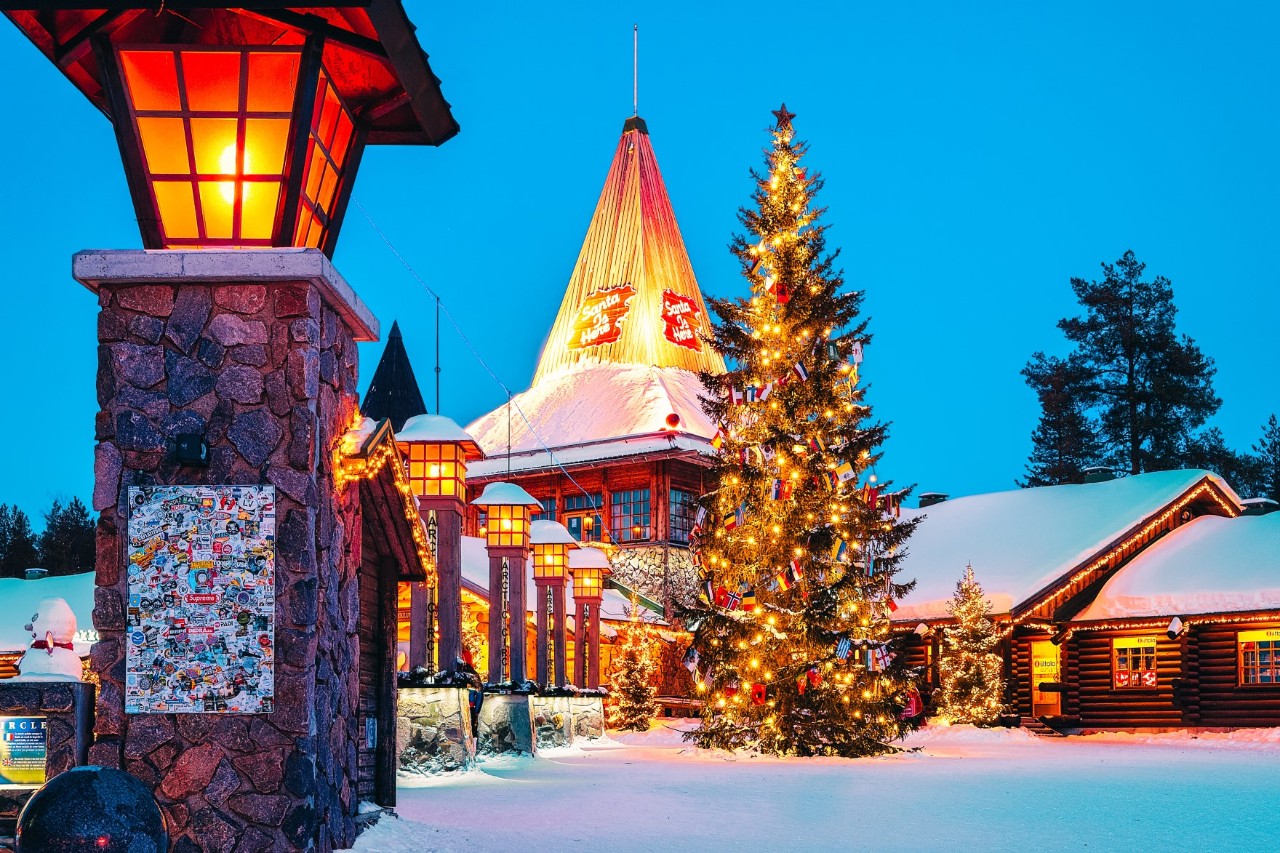





 Andorra
Andorra
 Belgium
Belgium
 Bulgaria
Bulgaria
 Denmark
Denmark
 Germany
Germany
 Estonia
Estonia
 Finland
Finland
 France
France
 Gibraltar
Gibraltar
 Greece
Greece

 Hand in Hand
Hand in Hand
 Ireland
Ireland
 Iceland
Iceland
 Italy
Italy
 Croatia
Croatia
 Latvia
Latvia
 Liechtenstein
Liechtenstein
 Lithuania
Lithuania
 Luxembourg
Luxembourg
 Malta
Malta
 Monaco
Monaco
 Netherlands
Netherlands
 Northern Ireland
Northern Ireland
 Norwegen
Norwegen
 Austria
Austria
 Poland
Poland
 Portugal
Portugal
 Romania
Romania
 San Marino
San Marino
 Sweden
Sweden
 Switzerland
Switzerland
 Slovakia
Slovakia
 Slovenia
Slovenia
 Spain
Spain
 Czech Republic
Czech Republic
 Hungary
Hungary

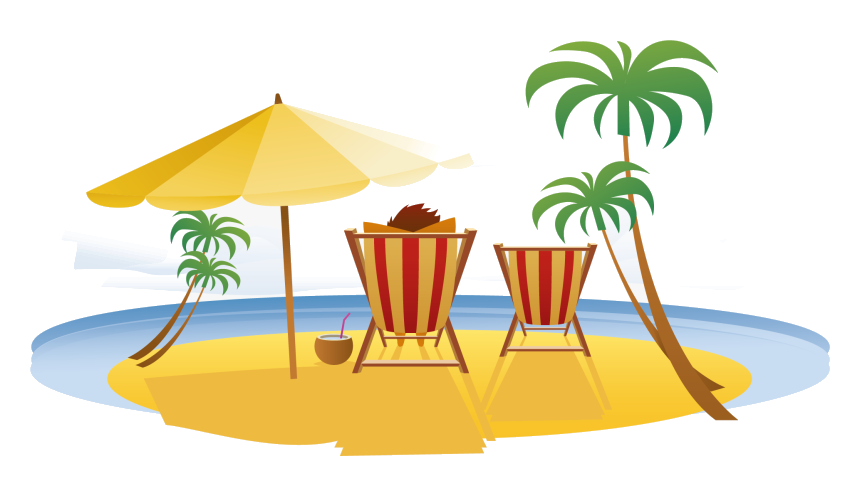 Vacation and Travel
Vacation and Travel
 Vatican city
Vatican city
 United Kingdom
United Kingdom
 Cyprus
Cyprus

《申根协议》(德语:Schengener Abkommen;法语:Convention de Schengen;荷兰语:Verdrag van Schengen),是一项欧洲大陆国家间的条约协定,其签约目的是取消相互之间的边境检查点,并协调对申根区之外的边境控制。即在成员国相互之间取消边境管制,持有任一成员国有效身份证或申根签证的人可以在所有成员国境内自由流动。根据该协定,旅游者如果持有其中一国的旅游签证即可合法地到所有其他申根国家。
《申根协议》的成员国亦称“申根国家”或者“申根协议国”,成员国的整体又称“申根区”。申根区目前包含26个国家,其中有22个属于欧盟成员。四个非欧盟成员国中,冰岛和挪威以北欧护照联盟成员国的身份加入申根区,官方分类属于与欧盟申根区活动相关的国家。不属于欧洲大陆的爱尔兰没有加入。
Die Schengener Abkommen sind internationale Übereinkommen, insbesondere zur Abschaffung der stationären Grenzkontrollen an den Binnengrenzen der teilnehmenden Staaten. Dies sind im Kern die Mitglieder der Europäischen Union, jedoch ohne Irland, Rumänien, Bulgarien und Zypern. Durch Zusatzabkommen mit der Europäischen Union wurde der Anwendungsbereich auf Island, Liechtenstein, Norwegen und die Schweiz ausgedehnt. Der Gültigkeitsbereich des Abkommens wird gemeinhin als Schengen-Raum bezeichnet.
Das erste dieser Abkommen vom 14. Juni 1985 sollte vor allem die Schaffung eines europäischen Binnenmarktes vorantreiben und wurde nach dem Unterzeichnungsort benannt, der Gemeinde Schengen im Großherzogtum Luxemburg. Die mehrfach modifizierten Regelungen (Schengen I bis III) konstituieren den Schengen-Besitzstand, einen wesentlichen Pfeiler des „Raumes der Freiheit, der Sicherheit und des Rechts“[1] der Europäischen Union. Bedeutung und Verdienste des Schengener Abkommens werden im Europäischen Museum Schengen dokumentiert.
Das unkontrollierte Passieren der Binnengrenzen als Prinzip der Schengener Abkommen wurde im Zuge der Flüchtlingskrise in Europa ab 2015 zeitweise von mehreren europäischen Ländern außer Kraft gesetzt, nachdem einzelne Mitgliedstaaten die Sicherung der Außengrenzen der Europäischen Union gefährdet sahen.
Von März bis Juni 2020 waren wegen der COVID-19-Pandemie zahlreiche Grenzen zwischen Mitgliedstaaten geschlossen.[2][3] Im Februar 2021 kam es wegen der Pandemie erneut zu Grenzschließungen.
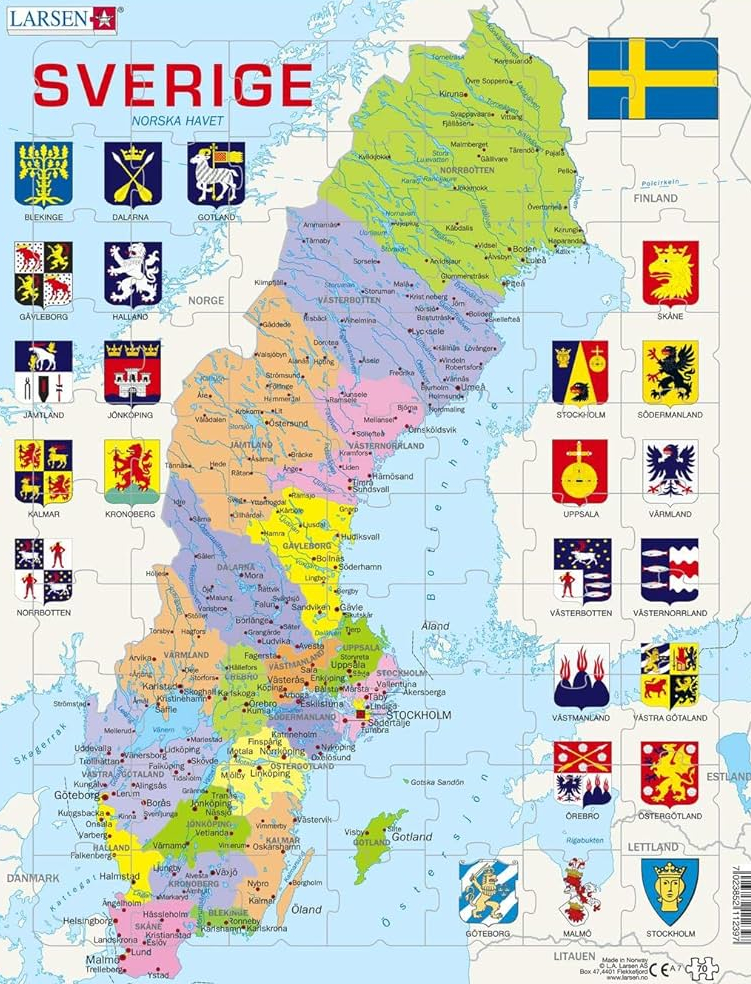
瑞典语(![]() svenska 帮助·信息 [ˈsvɛ̂nːska]),中文也称瑞典文,是北日耳曼语(也称为斯堪的那维亚语)的一种,主要使用地区为瑞典、芬兰(尤其是奥兰群岛),使用人数超过九百万人。它和斯堪的那维亚地区另外两种语言——丹麦语和挪威语——是相通语言。和其它北日耳曼语一样,瑞典语来源于古诺尔斯语。古诺尔斯语是维京时期斯堪的那维亚地区通用语言。
svenska 帮助·信息 [ˈsvɛ̂nːska]),中文也称瑞典文,是北日耳曼语(也称为斯堪的那维亚语)的一种,主要使用地区为瑞典、芬兰(尤其是奥兰群岛),使用人数超过九百万人。它和斯堪的那维亚地区另外两种语言——丹麦语和挪威语——是相通语言。和其它北日耳曼语一样,瑞典语来源于古诺尔斯语。古诺尔斯语是维京时期斯堪的那维亚地区通用语言。
瑞典成人的识字率高达99%。标准瑞典语是瑞典官方语言,来源于19世纪瑞典中部的方言,并在20世纪初固定下来。标准瑞典语的口语和书面语是统一且标准化的。如今从一些古老的偏远地区的方言演化下来的其它语言变体依旧存在,部分方言和标准瑞典语在语法和词汇上有很大区别,已经不能称为相同语言。这些方言只在很偏僻的地区使用,并且使用的人数很少,而这些人社会流动性很低。虽然目前没有迹象这些语言将成为死语,有很多学者认真研究这些方言,并且当地政府也鼓励人们使用这些方言,但是自上个世纪以来,使用这些方言的人数还是逐渐减少。
瑞典语标准语序是主谓宾结构,有时为了强调某些词会更改语序。瑞典语的构词学和英语相近,词形变化相对较少;有两种词性,没有语法上的格(以前的研究认为有两种格,主格和属格);单数和复数之间有区别。形容词根据词性、数量和限定范畴的不同发生改变。名词的限定范畴通过不同后缀来表示,同时前面加以定冠词和不定冠词。韵律特征体现在重音和声调上。瑞典语有大量元音。瑞典语还以Sj音而著称,这是一种变化复杂的辅音音位。
Schwedisch (Eigenbezeichnung: ) gehört zum ostnordischen Zweig der germanischen Sprachen. Damit ist das Schwedische auch Teil der indoeuropäischen Sprachfamilie. Das Schwedische ist eng verwandt mit dem Dänischen und dem Norwegischen (Bokmål, Nynorsk). Wie die anderen nordischen Sprachen stammt es vom Altnordischen ab, das die Sprache der Germanen in Skandinavien war.
スウェーデン語(スウェーデンご、svenska [ˈsvɛnːˈska] (![]() 音声ファイル))は、インド・ヨーロッパ語族ゲルマン語派北ゲルマン語群東スカンジナビア諸語に属する言語である。主にスウェーデンで使用される。
音声ファイル))は、インド・ヨーロッパ語族ゲルマン語派北ゲルマン語群東スカンジナビア諸語に属する言語である。主にスウェーデンで使用される。
長らくスウェーデンに支配されていたフィンランドでも国語としてフィンランド語と併用されている。ただし、公的表記はほとんど両語併記されるが、フィンランドでのスウェーデン語話者(スウェーデン語系フィンランド人)は6%以下である。フィンランド領のオーランド自治州ではスウェーデン語のみが公用語である。
インド・ヨーロッパ語族ゲルマン語派北ゲルマン語群のノルド語の一種に分類されている。同じ古ノルド語にはデンマーク語やノルウェー語も属する。この古ノルド3語の言語は、違いはあるものの非常に近く、それぞれの話者は他の言語をことさら学習していなくてもある程度理解できる。
ウクライナのヘルソン州(クリミア半島の北)にあるGammalsvenskby(「古いスウェーデン語の村」の意)には、エストニア沖の島々からロシア帝国によって18世紀初頭に強制移住させられた人々の子孫が住むが、ウクライナ語やロシア語に押されてスウェーデン語を話す者は減りつつある。
Swedish (Swedish: [ˈsvɛ̂nːska] (![]() listen)) is a North Germanic language spoken natively by 10 million people, predominantly in Sweden (as the sole official language) and in parts of Finland, where it has equal legal standing with Finnish. It is largely mutually intelligible with Norwegian and Danish, although the degree of mutual intelligibility is largely dependent on the dialect and accent of the speaker. Written Norwegian and Danish are usually more easily understood by Swedish speakers than the spoken languages, due to the differences in tone, accent and intonation. Swedish is a descendant of Old Norse, the common language of the Germanic peoples living in Scandinavia during the Viking Era. It has more speakers than any other North Germanic language.
listen)) is a North Germanic language spoken natively by 10 million people, predominantly in Sweden (as the sole official language) and in parts of Finland, where it has equal legal standing with Finnish. It is largely mutually intelligible with Norwegian and Danish, although the degree of mutual intelligibility is largely dependent on the dialect and accent of the speaker. Written Norwegian and Danish are usually more easily understood by Swedish speakers than the spoken languages, due to the differences in tone, accent and intonation. Swedish is a descendant of Old Norse, the common language of the Germanic peoples living in Scandinavia during the Viking Era. It has more speakers than any other North Germanic language.
Standard Swedish, spoken by most Swedes, is the national language that evolved from the Central Swedish dialects in the 19th century and was well established by the beginning of the 20th century. While distinct regional varieties and rural dialects still exist, the written language is uniform and standardized.
The standard word order is, as in most Germanic languages, V2, which means that the finite verb (V) appears in the second position (2) of a declarative main clause. Swedish morphology is similar to English; that is, words have comparatively few inflections. Swedish has two genders[2] and is generally seen to have two grammatical cases – nominative and genitive (except for pronouns that, as in English, also are inflected in the object form) – although it is debated if the genitive in Swedish should be seen as a genitive case or just the nominative plus the so-called genitive s, then seen as a clitic. Swedish has two grammatical numbers – plural and singular. Adjectives have discrete comparative and superlative forms and are also inflected according to gender, number and definiteness. The definiteness of nouns is marked primarily through suffixes (endings), complemented with separate definite and indefinite articles. The prosody features both stress and in most dialects tonal qualities. The language has a comparatively large vowel inventory. Swedish is also notable for the voiceless dorso-palatal velar fricative, a highly variable consonant phoneme.
Swedish has also had historic use in Estonia, although the current status of the Estonian Swedish speakers is almost extinct. Instead, it is used in the Swedish diaspora, most notably in Oslo, Norway, with more than 50,000 resident Swedes.[3]
Le suédois (svenska Écouter) est une langue scandinave parlée par environ 10,4 millions de locuteurs, principalement en Suède et en Finlande, les deux pays dont il est langue officielle. Comme les autres langues scandinaves, il est issu du vieux norrois, la langue commune à tous les peuples germaniques de Scandinavie à l'époque des Vikings. Il reste aujourd'hui mutuellement intelligible avec le danois et le norvégien. La langue écrite et orale est standardisée, mais il subsiste des variantes régionales issues des anciens dialectes ruraux.
Comme la plupart des langues germaniques, le suédois est une langue V2 : le verbe apparaît en deuxième position dans les propositions principales. La morphologie présente un nombre réduit de flexions. Il existe deux genres (commun et neutre) et deux nombres (singulier et pluriel), mais pas de cas. Par défaut, l'article défini est un clitique postposé, mais il existe également des articles séparés. L'adjectif s'accorde avec le nom en genre et en nombre, mais aussi en fonction de son caractère défini ou non. Phonologiquement, le suédois présente un nombre important de voyelles, ainsi qu'une consonne distinctive, le sj, dont la réalisation phonétique exacte varie selon les dialectes et reste débattue.
La lingua svedese () è una lingua germanica settentrionale parlata da 9,6 milioni di persone, prevalentemente in Svezia (come unica lingua ufficiale, dal 1º luglio 2009) ed in alcune zone della Finlandia (circa il 6% della popolazione soprattutto lungo le coste e nelle isole Åland), dove ha pari diritti legali insieme al finlandese. In gran parte è mutuamente intelligibile con il norvegese, mentre minore è l'intelligibilità reciproca con il danese. Discendente del norreno, lo svedese è attualmente la più parlata delle lingue germaniche settentrionali.
Lo svedese standard, parlato dalla maggior parte degli svedesi, è la lingua nazionale evolutasi a partire dai dialetti svedesi centrali nel XIX secolo. Malgrado esistano ancora distinte varietà regionali discendenti dai vecchi dialetti rurali, la lingua parlata e scritta è uniforme e standardizzata.
Alcuni di questi dialetti differiscono considerevolmente dalla lingua standard nella grammatica e nel vocabolario, e non sempre sono mutuamente intelligibili con lo svedese standard. Sebbene non siano in pericolo di un'imminente estinzione, simili dialetti sono stati in declino durante il secolo scorso, nonostante siano ben studiati e il loro uso sia spesso incoraggiato dalle autorità locali.
L'ordine standard delle parole nella frase è Soggetto Verbo Oggetto, sebbene possa essere spesso modificato per sottolineare alcune parole o frasi. La morfologia svedese è simile a quella inglese; le parole subiscono una minima flessione, ci sono due generi grammaticali, c'è distinzione tra singolare e plurale e non ci sono casi (sebbene vecchie analisi postulino due casi, nominativo e genitivo). Gli aggettivi conoscono una costruzione dei gradi di comparazione analoga a quella dell'inglese ma sono anche flessi secondo genere, numero e determinazione. La determinazione dei sostantivi è indicata principalmente attraverso suffissi (uscite), alle quali si affiancano anche alcune forme vere e proprie di articolo. La prosodia evidenzia la presenza sia dell'accento, sia, in molti dialetti, di qualità tonali. Lo svedese è foneticamente interessante anche per la presenza di una fricativa dorsopalatale velare sorda, un fonema consonantico altamente instabile.
El sueco (en sueco: ![]() svenska (?·i)) es una lengua germánica del norte de Europa, hablada por entre 9 y 14 millones de personas. La mayoría de sus hablantes vive en Suecia, en Finlandia y en las Islas Åland (autónomas), donde es el idioma oficial. El sueco es una lengua nórdica, al igual que el danés, el noruego, el islandés y el feroés. Las lenguas nórdicas son un subgrupo de las lenguas germánicas, las cuales forman parte de la familia lingüística conocida como lenguas indoeuropeas. El sueco, al igual que el resto de lenguas nórdicas, desciende del nórdico antiguo, hablado en Escandinavia durante la época vikinga. El sueco es en gran parte comprensible para un noruego y un danés.2
svenska (?·i)) es una lengua germánica del norte de Europa, hablada por entre 9 y 14 millones de personas. La mayoría de sus hablantes vive en Suecia, en Finlandia y en las Islas Åland (autónomas), donde es el idioma oficial. El sueco es una lengua nórdica, al igual que el danés, el noruego, el islandés y el feroés. Las lenguas nórdicas son un subgrupo de las lenguas germánicas, las cuales forman parte de la familia lingüística conocida como lenguas indoeuropeas. El sueco, al igual que el resto de lenguas nórdicas, desciende del nórdico antiguo, hablado en Escandinavia durante la época vikinga. El sueco es en gran parte comprensible para un noruego y un danés.2
El sueco estándar (rikssvenska) es la lengua nacional que evolucionó a partir de los dialectos del centro de Suecia durante el siglo XIX y se estableció completamente a principios del siglo XX. Si bien en la actualidad existen todavía varios dialectos rurales, el idioma hablado y escrito es uniforme y estándar con más del 99 % de habitantes adultos alfabetizados. Algunos de los dialectos genuinos difieren considerablemente del sueco estándar en gramática y vocabulario y no siempre son mutuamente comprensibles con el sueco (por ejemplo, el lenguaje del norte de Dalarna). Estos dialectos están confinados a áreas rurales con poca movilidad social. Si bien no están en peligro de desaparición, las poblaciones que hablan estos dialectos se están reduciendo a pesar de los esfuerzos de las autoridades regionales para preservar su uso.
El sueco se distingue por su prosodia, que difiere considerablemente entre variedades. Esta incluye tanto cualidades de acento como de tono. La existencia de dos tonos lingüísticos es un fenómeno compartido con el idioma noruego estándar, pero no con el danés. El idioma tiene nueve sonidos vocales que se distinguen por su longitud y sus cualidades, con lo que se forman 17 fonemas vocales. El sueco es también notable por la existencia de un fonema dorso-palatal velar fricativo sordo, un sonido que se encuentra en muchos dialectos, incluyendo las formas más prestigiosas del idioma estándar. Aunque similar a otros sonidos con distintas cualidades labiales, hasta ahora no se ha ubicado en otros idiomas; se asemeja parcialmente a una pronunciación simultánea de una sh-inglesa y una j-castellana. En el idioma escrito, este sonido se representa por combinaciones como sk-, skj, stj-, sj- y otras.
Шве́дский язы́к (svenska ) — язык восточной подгруппы скандинавской группы, на котором говорят в Швеции, части Финляндии и на автономных Аландских островах. Самый распространённый язык Скандинавии с числом носителей, превосходящим девять миллионов.


 Architecture
Architecture
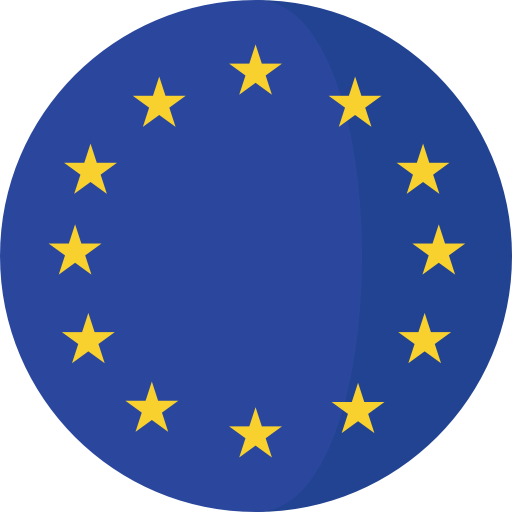 European Union
European Union
 International cities
International cities
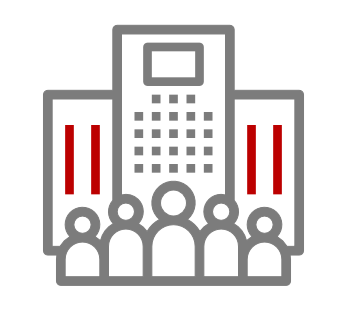 Companies
Companies
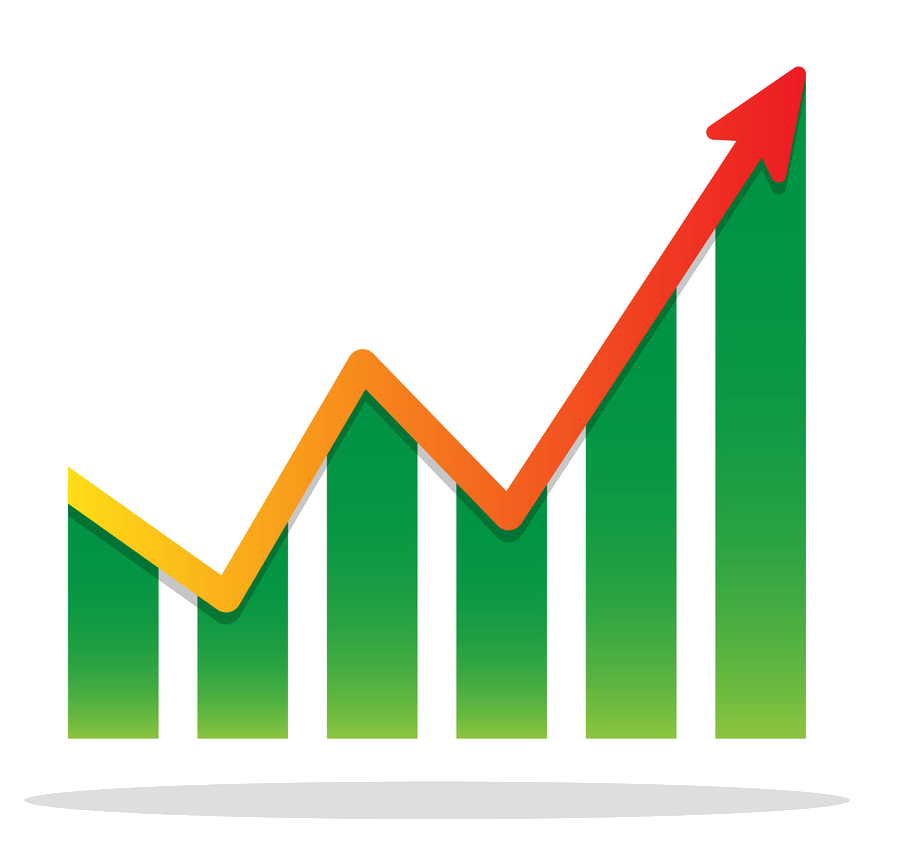 Financial
Financial
 Agriculture, forestry, livestock, fishing
Agriculture, forestry, livestock, fishing
 Music
Music
 Performing Arts
Performing Arts
 Literature
Literature
 Colleges and Universities in Europe
Colleges and Universities in Europe